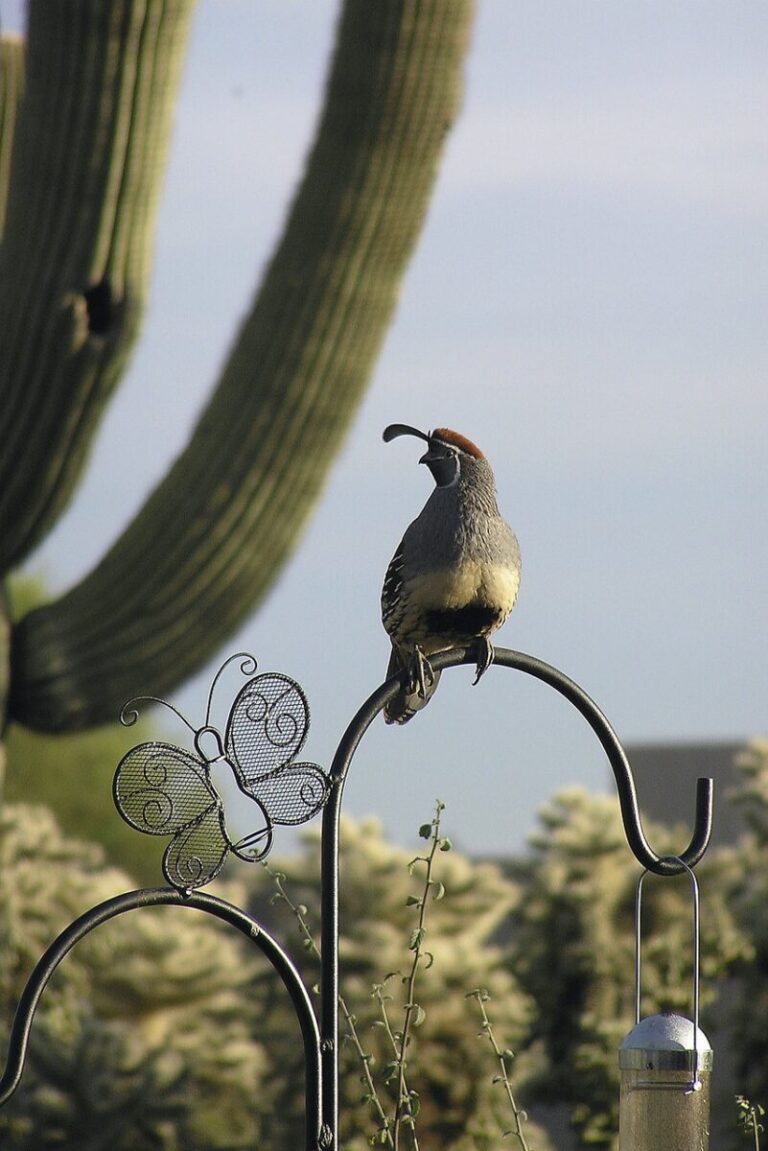Taking a Look at North America’s Largest Swallow
The purple martin — known scientifically as Progne subis — is a migratory bird species that can be found throughout most of the eastern United States. These strikingly beautiful creatures are not only admired for their vibrant plumage but for their melodic songs and remarkable behaviors, as well. Let’s explore their world a bit.
Size and Appearance
Purple martins are relatively large, measuring around 7 to 8 inches in length. Their beaks are black in color while their plumage is a deep, glossy purple-blue. Males exhibit darker shades of purple-blue, while females and young birds have lighter, more iridescent plumage with variable amounts of gray on the head and chest and a whitish lower belly. Purple martins have sleek, aerodynamic bodies and long, tapered wings — spanning up to 15 inches — which they use to gracefully soar through the skies. They also feature broad chests and short forked tails.
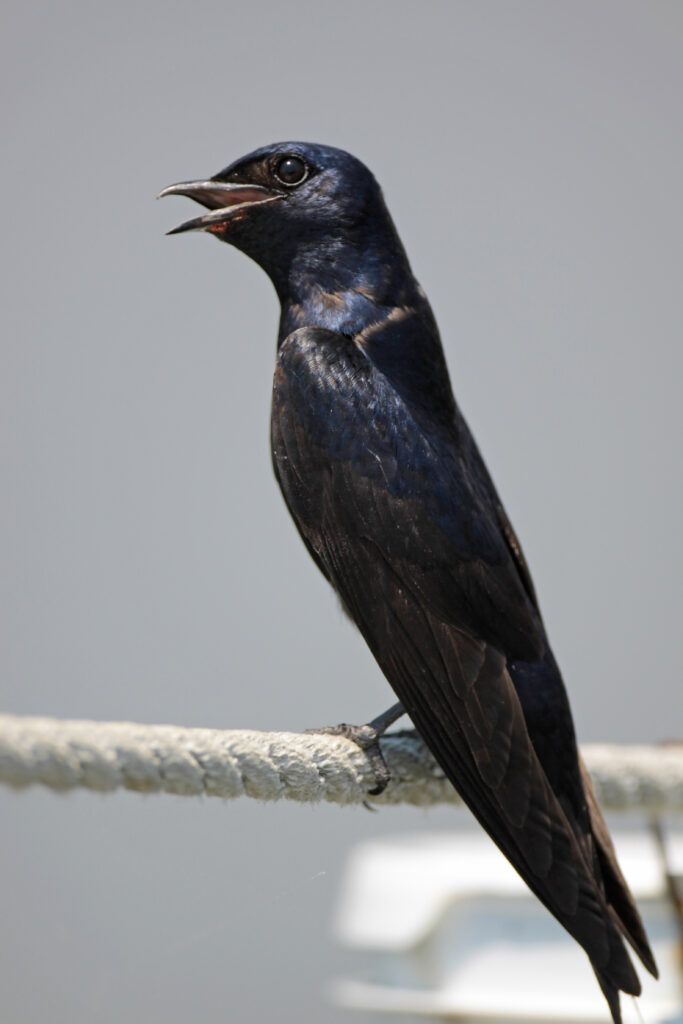
By Matt Tillett from Cumberland, MD, USA – CC BY 2.0,
https://commons.wikimedia.org/w/index.php?curid=48541377
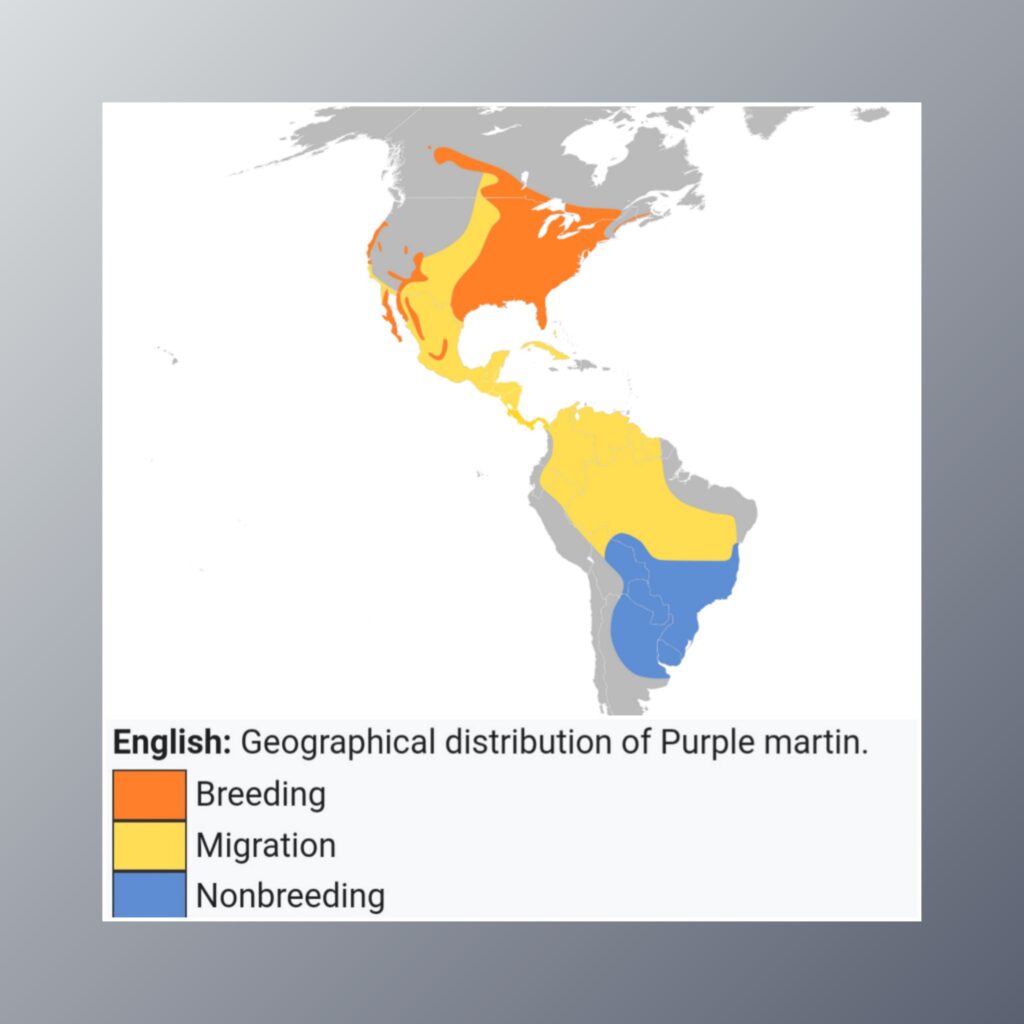
Image By Cephas – BirdLife International. 2016. CC BY-SA 4.0,
https://commons.wikimedia.org/w/index.php?curid=69316455
Geographic Range and Habitat
Purple martins are native to North and South America, with their breeding range spanning from the eastern United States and southeastern Canada, west to the Rocky Mountains. During the colder winter months, they migrate to South America, primarily Brazil and Argentina.
Their preferred habitats include open areas near water bodies, such as lakes, rivers and marshes, where they can find ample insects to feed on.
Song
The purple martin’s song is a melodious blend of chirps and warbles that can be heard throughout their breeding season. Their vocalizations are not only pleasant to the human ear but also serve as a means of communication between individuals.
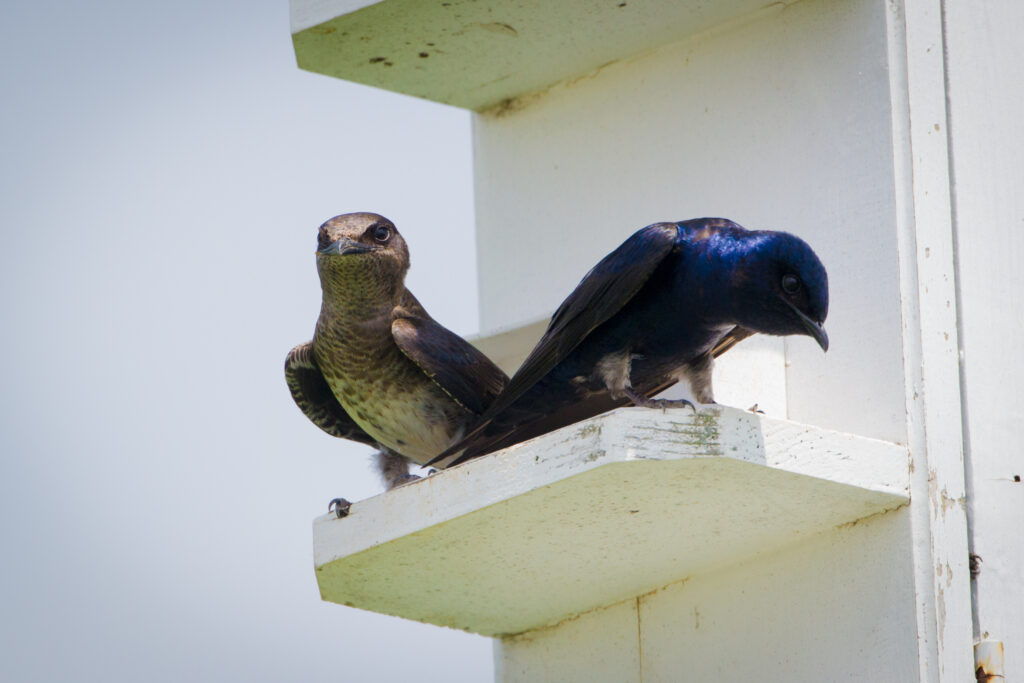
Image By Andrew C. — CC BY 2.0
https://commons.wikimedia.org/w/index.php?curid=41611194
Mating, Nesting and Breeding Habits
Purple martins are colonial nesters, meaning they form large breeding colonies during the nesting season.
Males arrive first at the breeding grounds to establish territories and attract females through elaborate courtship displays. Once paired, the birds work together to build their nests using twigs, grasses and leaves in cavities or nesting boxes provided by humans.
Migration
The annual migration of purple martins is a remarkable feat, with individuals traveling thousands of miles between their breeding and wintering grounds. These birds embark on their journey in large flocks, utilizing their strong flight capabilities to navigate long distances.
Diet
Purple martins are skilled aerial hunters, feeding primarily on flying insects such as beetles, flies and dragonflies. Their agile flight and sharp beaks enable them to catch prey on the wing, making them valuable allies in controlling insect populations.
Attracting Purple Martins to Your Yard
For those interested in attracting purple martins to their yards, providing suitable nesting sites is key. Specialized martin houses with multiple compartments and proper spacing can entice these birds to establish colonies and raise their young in residential areas. With no taste for seeds, they will not visit bird feeders.
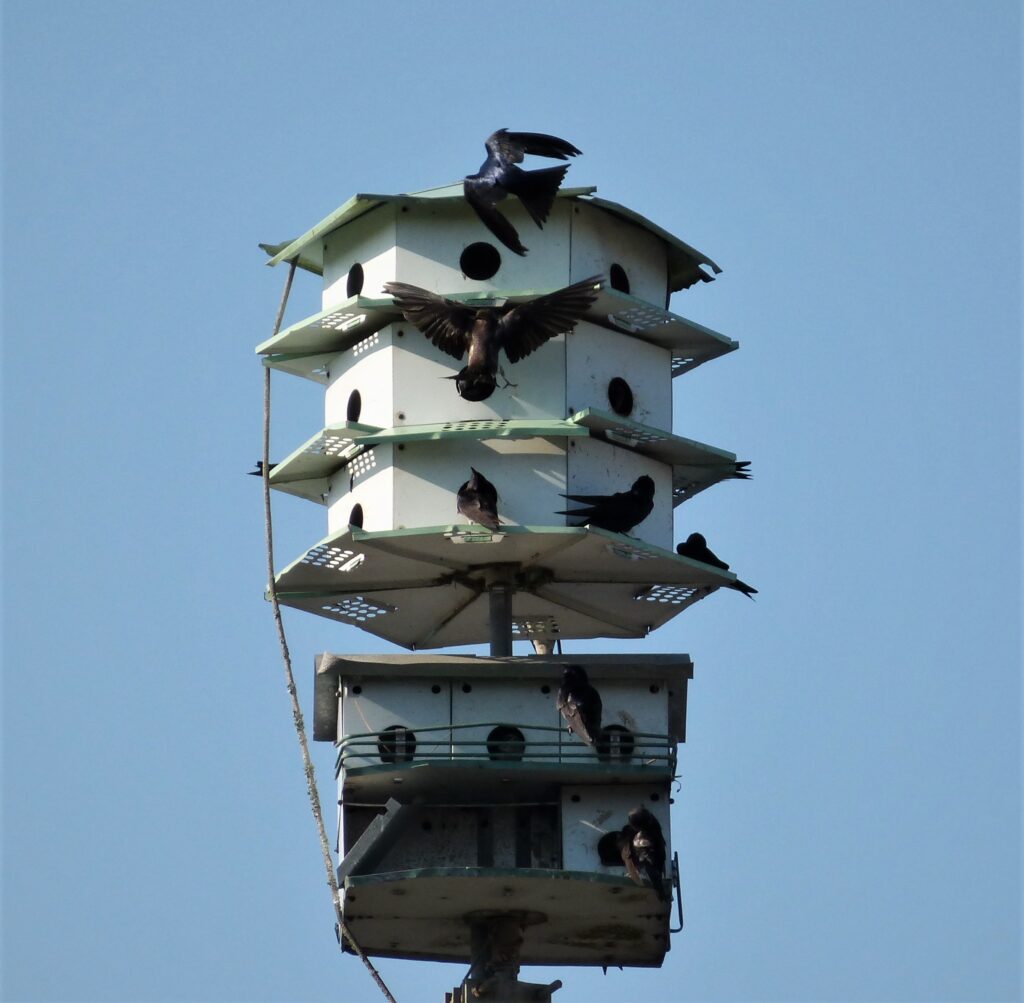
Photo By gailhampshire from Cradley, Malvern, U.K — CC BY 2.0,
https://commons.wikimedia.org/w/index.php?curid=73445126
Conservation Status
While not considered endangered, purple martins face threats such as habitat loss, competition for nesting sites and predation. Increased mercury contamination in their South American winter homes and the use of neonicotinoid pesticides in their North American breeding territories have negatively impacted their overall numbers in recent years. Hopefully this is a trend that will not continue.
* * * * * * * * * * * * * * * * * * * *
So there you have it. The purple martin stands as a wonderful representation of beauty, harmony and resilience in the natural world. By understanding and appreciating these remarkable birds, we can gain a deeper appreciation for the interconnectedness of all living beings and the importance of protecting our shared environment.
By Steven Roberts


